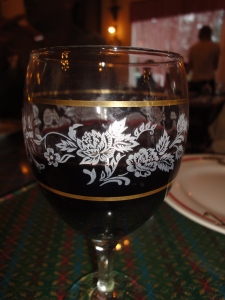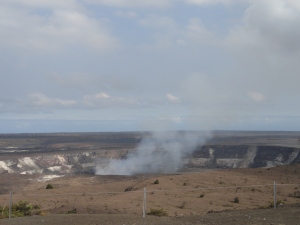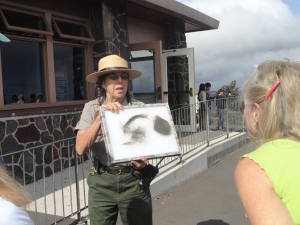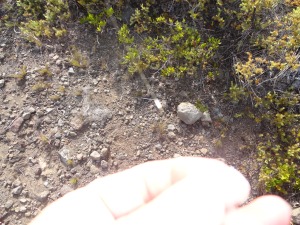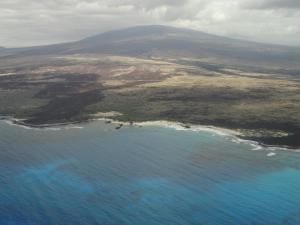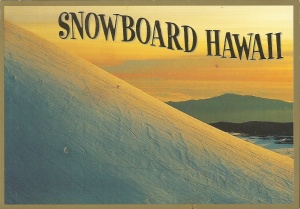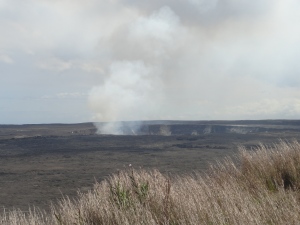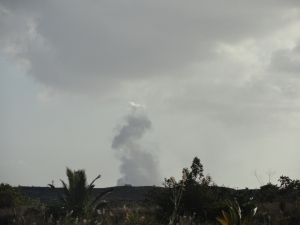It’s important to remember that the Volcano National Park and Volcano Village area are around 4500-5000 feet above sea-level and often COLD!!!!
 One time, we stayed in a cabin there (which had no heat…or walls…well, there were walls, but they didn’t quite reach the roof (the cabin was still a work in progress)…and the roof had a hole in it for the tree to grow through…loved the cabin! BUT it was COLD! It was so cold, I actually wore all the clothes I had in my suitcase, all at once, to bed. It didn’t snow, but it could have.
One time, we stayed in a cabin there (which had no heat…or walls…well, there were walls, but they didn’t quite reach the roof (the cabin was still a work in progress)…and the roof had a hole in it for the tree to grow through…loved the cabin! BUT it was COLD! It was so cold, I actually wore all the clothes I had in my suitcase, all at once, to bed. It didn’t snow, but it could have.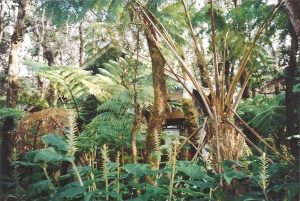
That’s not to say it’s always cold. But chances are good. And, even if it’s not cold, it’s still more chilly than down by the ocean.
Sometimes the rain is a relief, anyway. If you are prepared.
About 15 minutes from the entrance to Hawaii Volcanoes National Park (going towards South Point) is the trail head for Ka’u Desert Trail. (There’s a much longer way to get there, too, through the park, but…it’s much longer…)
This Trail takes you to (and passed) foot prints, forever embedded in mud-ash. Just every day footprints. We actually saw one footprint in the back yard area in one of the vrbo’s we stayed at, down by the shoreline (we think).

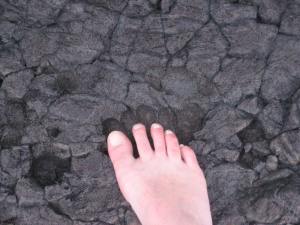


We haven’t been on this trail yet (I had it on my to-do list this last trip, but ran out of time… However – that link tells all about it. Don’t panic when you read the first description – keep going till you get to the easier route.
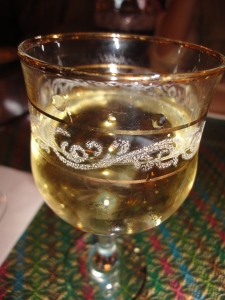 In Volcano Village is one of the best Thai restaurants on the Island – Thai Thai. People come from all over the Island just to have dinner there (and, since, as I mentioned, the Island is HUGE – this can mean drives up to 2 1/2 hours or more!) If you go to Volcano, you are just as likely to be asked if you went to Thai Thai as you are to be asked if you went to the Thurston Lava Tube. It’s delicious food, an acceptable price, and mismatched wine glasses. You never know at what point you are going to go someplace, with high expectations and have them destroyed by popularity and conformity. I will be so disappointed the day I go and my wine glass matches someone else’s. But for now – so far so good.
In Volcano Village is one of the best Thai restaurants on the Island – Thai Thai. People come from all over the Island just to have dinner there (and, since, as I mentioned, the Island is HUGE – this can mean drives up to 2 1/2 hours or more!) If you go to Volcano, you are just as likely to be asked if you went to Thai Thai as you are to be asked if you went to the Thurston Lava Tube. It’s delicious food, an acceptable price, and mismatched wine glasses. You never know at what point you are going to go someplace, with high expectations and have them destroyed by popularity and conformity. I will be so disappointed the day I go and my wine glass matches someone else’s. But for now – so far so good.
..
You can stay right in the National Park – the Hawaii Volcano House has motel rooms and cabins available. It’s the oldest hotel in Hawaii (state or Island? not sure), established in 1846, but has been restored, and recently renovated. It overlooks the Halema’uma’u Crater.
We’ve never stayed there, but I’m sure the view makes it all worthwhile! We always rent homes from the www.vrbo.com (Vacation Rental By Owner) website. So far, we’ve had very successful stays, with no disappointments.
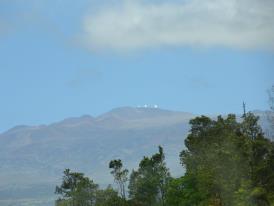 The Golf Course is an 18-hole course (par 72)… I took golf lessons (from a golf genius here in Calgary) and so was anxious to go golfing here. I decided I’d just do 9 holes, so as not to frustrate myself, the people with me (Peter and Richard, that particular time), and the people behind me.
The Golf Course is an 18-hole course (par 72)… I took golf lessons (from a golf genius here in Calgary) and so was anxious to go golfing here. I decided I’d just do 9 holes, so as not to frustrate myself, the people with me (Peter and Richard, that particular time), and the people behind me.
It was so much fun, with such beautiful views (you can see both Mauna Loa and Mauna Kea from the course), I decided to continue on for the 18! (Although, I must confess: I did really lost my concentration when the group of Nene’s* wandered through, with babies in tow… SOO CUTE!!)
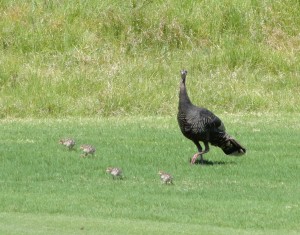

Visit, too, the Volcano Winery, for wine tasting and gift shopping. They are open 10am-5pm, every single day, except Christmas. (10am seems a tiny bit early for wine tasting, but at least you know it’s open if you forgot to buy someone’s gift!)






And, Don’t forget the Volcano Farmer’s Market! But, you have to be there at the crack of dawn – I mean, truly! it’s only open from 8am to 10pm…so… we slept through it. The friends we were travelling with, though, sacrificed themselves and went – bringing home yummy samplings for us to try when we woke up!
It seems to me that they brought malasadas…which, I don’t know if that’s true, now, or just a sweet dream… Wait’ll we talk about malasadas! They are even more popular than Thai Thai!
See you Wednesday!
There are signs everywhere that caution you to “watch for Nene crossing the road” and “don’t feed the Nene”. PAY ATTENTION!

